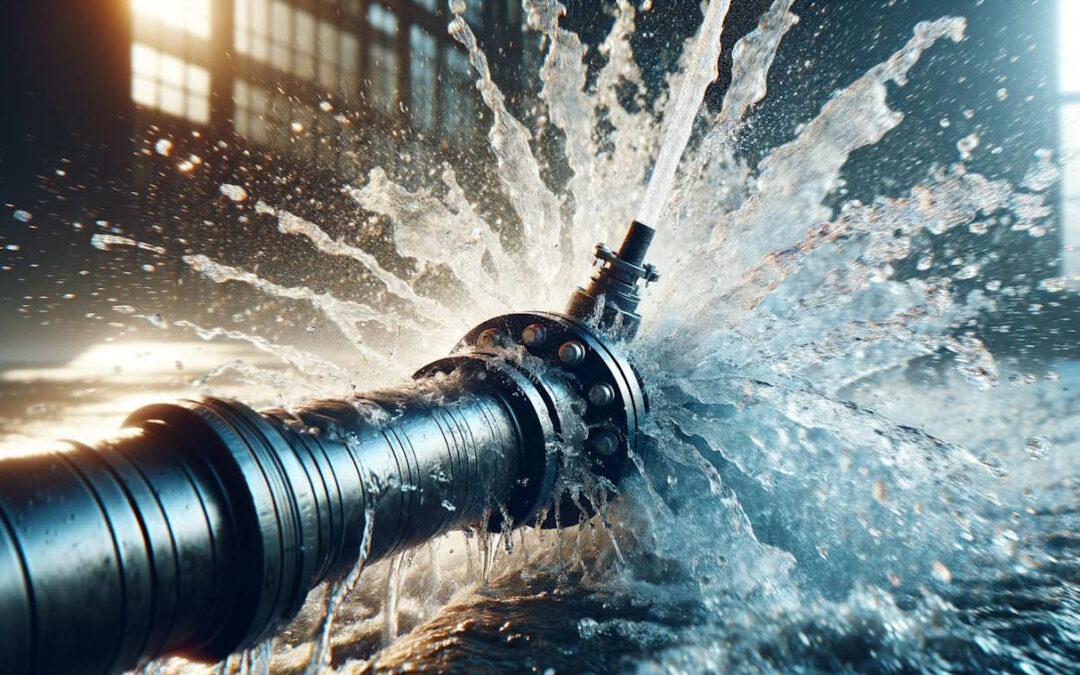The Relevance of Normal Water Leak Detection for Long-Term Home Defense
The Relevance of Normal Water Leak Detection for Long-Term Home Defense
Blog Article
Innovative Solutions for Very Early Detection of Water Leakages in Buildings and Facilities
From sophisticated leakage discovery technologies to the implementation of IoT sensors for real-time surveillance, the landscape of leakage prevention is evolving rapidly. Automated water flow analysis systems are reshaping how leakages are identified and addressed, leading the means for an aggressive strategy to water leakage discovery.
Advanced Leakage Discovery Technologies
Advanced leakage detection modern technologies, geared up with advanced sensors and algorithms, play an important role in swiftly identifying and determining water leaks in various setups. Electromagnetic sensing units can determine adjustments in electromagnetic areas caused by water, offering yet an additional layer of leak discovery capability.

IoT Sensors for Real-Time Surveillance
In the realm of contemporary water leakage discovery, the assimilation of IoT sensing units for real-time tracking stands for a crucial advancement in improving positive leakage discovery capabilities. These sensing units supply continuous monitoring of water systems, supplying real-time information on water circulation prices, stress variations, and temperature modifications. By leveraging IoT modern technology, these sensing units can detect even the smallest anomalies in water usage patterns, allowing very early recognition of possible leakages prior to they rise into major issues.
IoT sensors send data to a central platform, where sophisticated algorithms analyze the info and produce alerts or notifications when irregularities are spotted. This real-time surveillance capacity permits homeowner or facility managers to promptly address leakages, decreasing water damages, minimizing repair service expenses, and conserving water resources.
In addition, IoT sensing units can be incorporated with building administration systems, enabling automated feedbacks to identified leakages, such as turning off water shutoffs or turning on pumps to alleviate the effect of leaks. On the whole, the application of IoT sensors for real-time surveillance dramatically enhances the efficiency and effectiveness of water leak discovery in buildings and framework.
Maker Discovering Algorithms for Leak Forecast

One trick advantage of using machine learning for leakage prediction is its ability to continually discover and boost its accuracy in time. As even more data is collected and fed right into the algorithm, it can improve its forecasts and adjust to transforming problems, inevitably boosting the reliability of leakage detection systems.
Moreover, artificial intelligence algorithms can assist in recognizing subtle indications of leaks that go to my blog might go unnoticed by typical tracking approaches. water leak detection. By examining complex information embed in real-time, these algorithms can give early cautions and alerts, enabling prompt treatment and preventive upkeep to minimize possible water damages and linked prices
Utilizing Thermal Imaging for Leak Detection
Thermal imaging modern technology offers an encouraging approach for identifying water leaks in various systems and facilities. By utilizing infrared radiation and temperature variations, thermal imaging video cameras can identify surprise leaks that are not quickly noticeable to the naked eye. When water gets away from pipelines or frameworks, it usually alters the temperature of the bordering location, producing temperature level differentials that thermal cameras can catch. These temperature abnormalities are then converted into visible pictures, highlighting the precise place of the leak.
One of the key benefits of thermal imaging for leak discovery is its non-intrusive nature. Unlike standard approaches that might need burglarizing wall surfaces or floors to locate leakages, thermal imaging enables non-destructive screening. This not just conserves time and decreases prices yet additionally decreases disruption to the building or framework being assessed. In addition, thermal imaging can quickly scan huge locations, offering a detailed summary of potential leak resources in a timely fashion. Generally, the usage of thermal imaging modern technology enhances the performance and precision of water leak discovery, Click This Link making it a useful tool for maintaining the integrity of structures and infrastructures.
Automated Water Flow Evaluation Equipments
Exactly how can automatic water flow analysis systems revolutionize the discovery and administration of leakages in numerous systems and infrastructures? Automated water flow analysis systems provide an aggressive method to leak detection by continually keeping an eye on water circulation prices and patterns. By establishing baseline data, these systems can promptly recognize discrepancies that may indicate a leakage, making it possible for timely intervention to stop substantial damages.
These systems make use of innovative formulas to evaluate real-time data and offer immediate notifies when anomalies are spotted, enabling quick activity to be taken. In addition, computerized water flow analysis systems can be incorporated with structure management systems or IoT platforms, boosting overall performance and allowing remote tracking capacities.
Furthermore, the data collected by these systems can be utilized for anticipating maintenance purposes, helping to recognize prospective weak factors in the infrastructure before leakages take place. Overall, the implementation of automatic water circulation analysis systems can considerably boost leak detection and management learn this here now practices, ultimately causing cost savings, decreased water wastefulness, and boosted sustainability in structures and infrastructure.

Conclusion
To conclude, the integration of innovative leak detection modern technologies, IoT sensors, artificial intelligence formulas, thermal imaging, and automatic water circulation analysis systems provides ingenious remedies for early detection of water leakages in buildings and facilities. These innovations allow real-time tracking, prediction of leakages, and efficient detection approaches to avoid water damages and waste. Implementing these services can help in keeping the honesty and sustainability of water systems in different settings.
Report this page